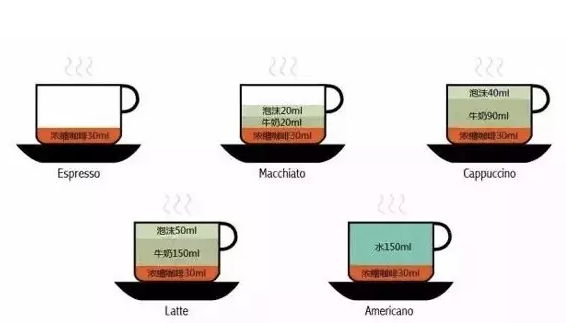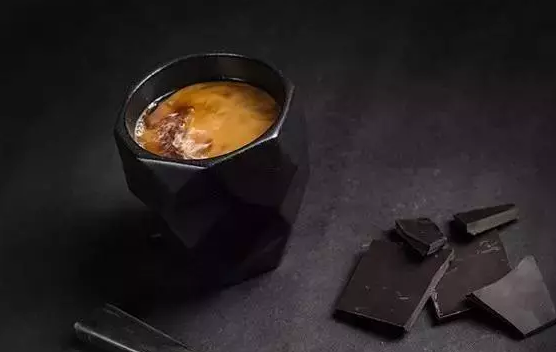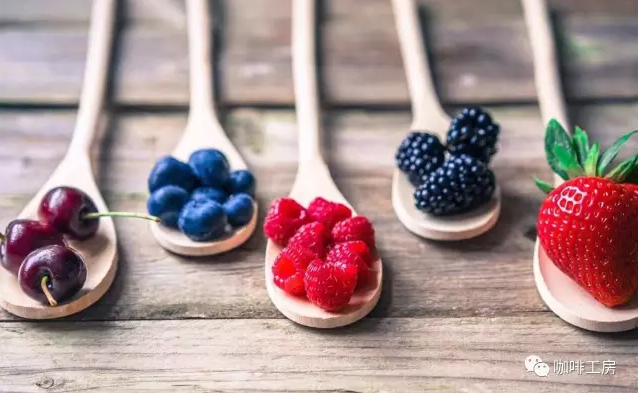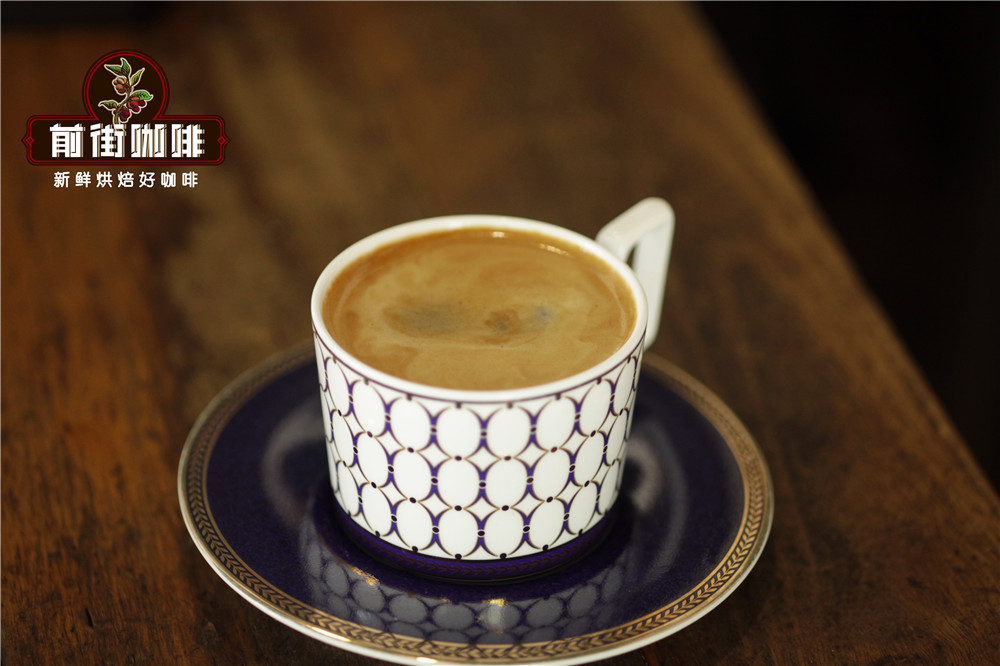What is espresso? Italian coffee beans are better? How do you mix Italian coffee beans?
What is espresso?
Espresso refers to all modified coffee drinks based on Espresso/ espresso made by espresso machines. For example, we usually drink kabu, latte, mocha and American style, which are all coffee drinks made by adding milk or water to Espresso.
1shot: espresso 30ml
Capptccino: 1: 3: 2
Latte: 1: 4: 1
Macchiato: 1 shot espresso + 1 spoonful of milk foam
American 1 shot espresso + hot water
Refers to a single espresso Espresso Solo. "Solo" is Italian, equivalent to the English meaning of "single", indicating the weight of Espresso. In addition, in Italy, "Espresso" is generally referred to as "Caffe". A good Espresso should strike a perfect balance between sour, bitter and sweet (the editor suggests privately that you can go to a coffee shop and order a cup of Espresso for yourself). You can drink it in three mouthfuls, or drink it in one go.
2 cups of double espresso Espresso Doppio
Concentrated into half an extra-strong espresso Espresso Ristretto
Extract light espresso Espresso Lungo with a lighter flavor

Italian American Coffee
Espresso diluted with hot water. Even after dilution, the taste and aroma of Espresso remain the same, and the flavor is completely different from that of American coffee brewed by filtration. (pay attention! Italian American coffee is not American coffee-for example, Italian American coffee is espresso extracted from 60ml plus water from 90ml, while American coffee is black coffee brewed directly into 150ml)
Latte
Latte / Italian (Caffe Lette Italian style)
If you order Caff'e Lette in an Italian cafe, you may find that there are surprisingly few milk bubbles in the cup. Some cafes have Caff'e Lette and even have almost no milk foam. The charm of Italian Caff'e Lette is that Espresso and milk are completely integrated, while the natural sweetness of milk is still clearly discernible.
Latte / Seattle style (Lette Art in a Seattle style)
In the United States, coffee chains with Seattle as their birthplace, such as Starbucks, order Caff'e Lette far more than Espresso. This is very different from the situation in Italian cafes. The characteristic of the Caff'e Lette in Seattle-style chains is to pour foam-laden steam foam into the stronger Espresso, which is filled with so much foam that it touches the upper lip when drinking. The average Italian Caff'e Lette is 8 ounces, while the Seattle style is generally 12 ounces.
Double concentrated latte
Cappuccino
Wet (Cappuccino or Wet Cappuccino)
The coffee is made by injecting steam foam into the Espresso. It is called Cappuccino in Italy, but in Seattle-style cafes, to distinguish it from Dry Cappuccino, it is sometimes called Wet Capuccino. The delicacy of Cappuccino depends on the texture of steam bubbles. The ideal steam foam is extremely soft, smooth, thick and thick. Remember to shake the bubble pot before pouring the steam into the foam to mix the foam and milk well.
Dry (Dry Cappuccino)
This is a kind of Cappuccino that is mixed and scooped up while drinking. When making, pour the hot milk into the Espresso, and then fill the surface of the coffee with extremely soft foam. Finally, sprinkle with cinnamon as much as you like.
Maggiadot.
This kind of coffee, added with the same amount of steam foam as Espresso, "in other words, it means that milk is dyed white on brown Espresso." (people often drink caramel Maggialdo is to squeeze caramel on the milk foam.)
Mocha
Mocha Coffee (Mochacino or Mocha)
Pour the steam foam into the Espresso and it becomes Cappuccino. If you add chocolate sauce, it's Mochacino.
Campbell blue coffee
Squeeze whipped cream on the surface of "Espresso". Fancy coffee sprinkled with cocoa powder. When drinking, you can first scoop up the cream stained with Espresso with a spoon to eat, or stir the whole cup well to drink. (ps. The editor likes to sprinkle some salt on the cream to balance the sweetness of the cream and make the taste more balanced.
Finally, let's learn about the production process of a cup of Espresso through this film. Remember that the next time you buy coffee, see if the Espresso brewed has a strong Crema, which represents the extraction quality of the whole cup of coffee and the freshness of the beans-stop blindly advocating the brand and get low-quality coffee at a high price!
Single bean refers to a single variety of coffee beans, the coffee is a single coffee, can also be made with mixed beans (such as the famous Blue Mountain mix, that is, fake Blue Mountain, that is, spelled), so as long as it is suitable for individual coffee beans are single coffee beans.
Italian beans are generally blended, several kinds are all put together, deep-roasted, and some are individually made with one kind of coffee beans, roasting is Italian roasting, as long as it is Italian roasting, Italian beans are all made of Italian beans, most of which are blended. Steam pressure extraction machine, invented by the Italians, the espresso made by the steam pressure coffee machine is espresso. With espresso as the base, with milk, foam, chocolate, ice cream and so on, all kinds of combinations, fancy or creative coffee, are called espresso. The core key words are Italian coffee machine, Italian concentration. The coffee in this system is called espresso. So, espresso is a system, a system based on espresso quickly extracted by a steam pressure coffee machine.
As the base of all espresso, Espresso can be said to support half the sky of the coffee world. An ideal Espresso should be able to strike a balance between the various elements, taste bright, and feel sweet but not bitter in the throat after drinking it. To put it more specifically, it should have moderate sour, bitter, sweet, rich taste, solid and mellow consistency, lasting, and make people feel as refreshing and sour as citrus.
Let's not talk too much nonsense. Let's explain it to you:
1. Standards for Italian enrichment (Espresso)
2. How to identify Espresso
3. Factors affecting the quality of Espresso.
4. How to adjust the Italian concentrated formula
5. Different Italian concentrated formulations from all over the world

Standard for Italian enrichment (Espresso)
In the World Barista Competition (WBC,World Barista Championship), Italian concentrate (Espresso) needs to meet the following conditions:
a. The capacity of an espresso is 1 ounce (ounce) (25-35ml including fat (crema)).
b. An espresso is extracted from several grams of coffee (the specific number of grams depends on the coffee and the degree of grinding)
c. The water temperature used for extraction is between 90.5 and 96 degrees Celsius (195 to 205 degrees Fahrenheit).
d. The extraction pressure of the Italian coffee machine is 8.5-9.5 atmospheric pressure.
e. The best time for coffee extraction is between 20 and 30 seconds, but there is no mandatory rule
f. For the Italian concentrate used in the same drink, the difference in extraction time must be controlled within 3.0 seconds.
g. Espresso must be served in a 60-90ml (2-3 oz ounce) coffee cup with one ear.
h. The Italian style is condensed into a coffee spoon, paper towel and water when the referee tastes it.
How to identify Espresso
Look at the color of crema, the uniformity of color, thickness, extension, etc.
Smell: caramel, nut, chocolate, etc.
Taste: coffee sweet, sour, mellow, aftertaste, etc., especially pay attention to the Italian concentrated "bittersweet" taste, hierarchy and balance.
Aftertaste: after drinking, feel the feeling of the coffee in the mouth, that is, the aftertaste of the coffee, including how the aroma, taste and so on.

Important Notice :
前街咖啡 FrontStreet Coffee has moved to new addredd:
FrontStreet Coffee Address: 315,Donghua East Road,GuangZhou
Tel:020 38364473
- Prev

What are Italian coffee beans? What's the difference between Italian coffee beans and individual coffee beans?
Single bean refers to a single variety of coffee beans, the coffee is a single product coffee, can also be made with mixed beans (such as the famous Blue Mountain mix, that is, fake Blue Mountain, that is, spelled), so as long as it is suitable for single coffee beans are single coffee beans are generally mixed, several kinds are put together, deep roasting
- Next

What's the difference between American coffee and Italian coffee? Effect of roasting degree of Italian coffee beans on coffee flavor
Authentic American coffee Italians call espresso-based coffee diluted with water as American coffee, but in fact, the real American coffee, that is, the coffee that Americans drink most often, is actually dripping coffee. "Welcome to the US, Do you want an Americano?" (welcome to America, would you like a cup of American coffee? (you can see it from this sentence
Related
- Detailed explanation of Jadeite planting Land in Panamanian Jadeite Manor introduction to the grading system of Jadeite competitive bidding, Red bid, Green bid and Rose Summer
- Story of Coffee planting in Brenka region of Costa Rica Stonehenge Manor anaerobic heavy honey treatment of flavor mouth
- What's on the barrel of Blue Mountain Coffee beans?
- Can American coffee also pull flowers? How to use hot American style to pull out a good-looking pattern?
- Can you make a cold extract with coffee beans? What is the right proportion for cold-extracted coffee formula?
- Indonesian PWN Gold Mandrine Coffee Origin Features Flavor How to Chong? Mandolin coffee is American.
- A brief introduction to the flavor characteristics of Brazilian yellow bourbon coffee beans
- What is the effect of different water quality on the flavor of cold-extracted coffee? What kind of water is best for brewing coffee?
- Why do you think of Rose Summer whenever you mention Panamanian coffee?
- Introduction to the characteristics of authentic blue mountain coffee bean producing areas? What is the CIB Coffee Authority in Jamaica?

